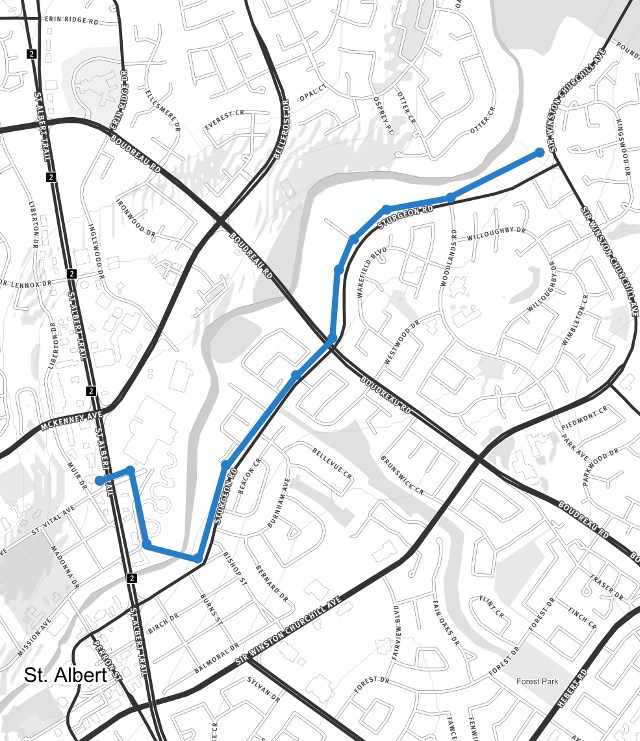City crews will have to dig a whole lot of holes to lay the sewer pipe called Project 9, and they'll have to do it without a penny from Warren Buffett.
City crews will have to dig a whole lot of holes to lay the sewer pipe called Project 9, and they'll have to do it without a penny from Warren Buffett.
City residents will get an update on Project 9 (or the Phase 3 North Interceptor Trunk Line) at an open house next Thursday at St. Albert Place.
Project 9 is a proposed $40 million sanitary sewer line that's meant to service new developments to the west and southwest of St. Albert. The region's current sewer line is nearly at capacity and can't support new development.
“Without this, the city doesn't grow to the west or the south,” Mayor Nolan Crouse said.
The open house will discuss the alignment, financing, and construction plans for the line.
“The current plan is that council will be looking at a borrowing bylaw,” Crouse said, one that would likely involve borrowing $30 million and taking $10 million from the offsite levy recovery fund.
While there was once hope that Berkshire Hathaway, the multinational corporation owned by billionaire Warren Buffett, would pay for the project, Crouse said he got a call from that company about 10 days ago saying that they no longer wished to invest in it.
“They just didn't view it as a good fit, so we're off on our own.”
The borrowing bylaw should come before council within three months, Crouse said.
City staffers have sketched in about 60 per cent of the plans for the line, said Kate Polkovsky, the city's lead engineer on the project. When built, the 1.5 metre wide pipe will start from the end of an existing pipe near St. Vital Ave. and St. Albert Trail, run under Rivercrest Cres. to a lift station, and then tunnel under the Sturgeon River before following Sturgeon Rd. to the big Alberta Capital Region Wastewater Commission pump station by the botanic park. The whole 3,500 m pipe will be about seven to 10 m below ground.
Instead of digging a huge trench, the city hopes to install the pipe using micro-tunnelling, Polkovsky said. This will involve digging a hole, dropping in a burrowing machine similar to the ones used to create subways, and having it drill to a second hole 150 to 300 m away.
Polkovsky said the drill would work very slowly, advancing maybe a metre a day, so she doesn't expect it to cause any seismic disturbances. (Crews will monitor for seismic activity during construction.) Crews will fill in the drill's tunnel with pipe segments and supports as it advances to prevent any subsidence.
Crews have plotted the pipe's course so that it avoids any privately owned land and affects as little of the Sturgeon as possible, she continued. It will be up to the contractor the city hires to create a plan to minimize the impact of the pipe on the river.
Crews plan to dig the holes for the drill on grassy boulevards where possible so they don't have to punch through streets or sidewalks. That probably won't be possible for the segment north of the Sturgeon (which is almost entirely paved over), but they definitely won't be digging holes in St. Albert Trail. They'll also fill in holes as they go – there will be three open at most at a time.
“We're working in very tight (road) alignments,” she added, so they'll have to truck any dirt they excavate off-site.
Crouse said that city staffers found no issues with the pipe's route in a recent geotechnical study, but added that they could run into some surprises once they start digging.
Polkovsky said she hoped to start construction this fall and have the pipe finished by early 2018.
The open house is from 3 to 7 p.m. in the Douglas Cardinal (east) boardroom at St. Albert Place this April 7. There will be a formal presentation at 5 p.m. followed by a Q&A session.
